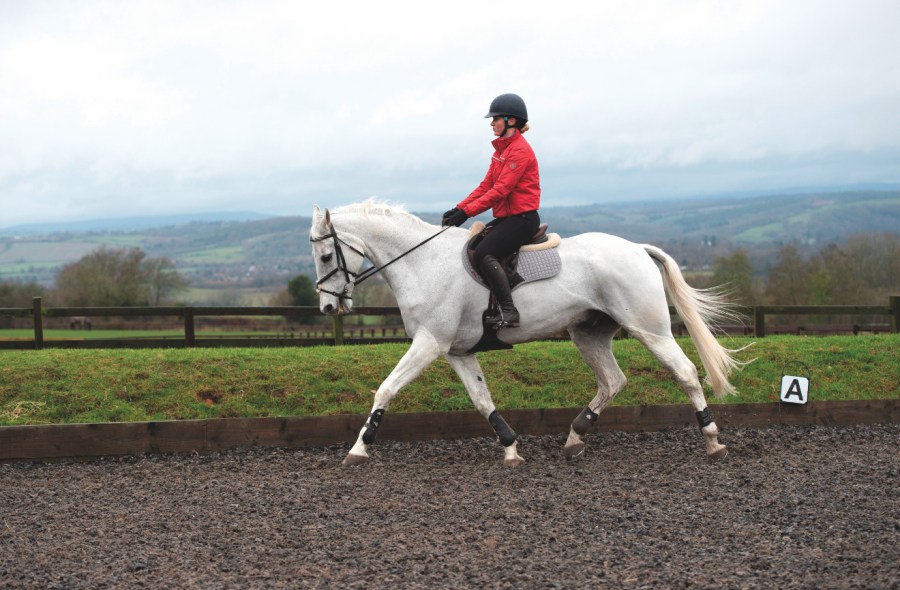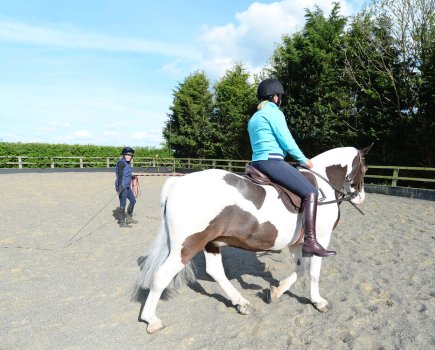If you find your horse hanging on one rein, it can impact your dressage scores as well as make riding uncomfortable. Once you’ve had your horse’s back, teeth and saddle checked, you may wish to address this habit with training.
Plenty of transitions and lateral work can help, but if you’re still struggling, this exercise from BHS coach Alison Kenward could be useful.
While you’re warming up, ask yourself two questions:
- Am I sitting evenly?
- Do I have an equal rein length?
This will help you to assess your position and how that may be influencing your horse.
When a horse hangs on one rein it often becomes a habit. They might resist working in a different way until it becomes familiar and they feel confident that they can maintain their balance.
It takes time and patience to teach a horse to work in a new frame, so make sure you include plenty of variety in your sessions and encourage regular rest and relaxation breaks, such as stretching in walk.
How to solve it
Start on the rein your horse is hanging on – for the purpose of this example, we’ll say the horse is hanging on the right rein.
First of all, you need to check your horse’s response to your leg aids in walk on the right rein and determine if they move away from your right leg. To begin:
- In walk, ride away from the track, slow your horse down and ask them to move away from your leg, riding a turnabout the forehand.
- Make sure your hands allow them the freedom to seek the rein contact, before moving into medium walk again.
- Try to resist the temptation to allow them to become heavy in your right hand by squeezing with your legs and encouraging them to step more actively forwards.
- Ask for trot and concentrate on maintaining a regular rhythm.
- Return to walk and repeat the exercise two or three times on each rein.
The next step is to position your horse in slight shoulder-fore on the long side and assess how they’re coping before they lose balance. Circle away to help them reconnect.
This exercise can be ridden in all three paces by varying the size of the circle depending on the pace, so that the circle is easy for them. As a guide, a 10m circle in walk, 15m circle in trot and 20m in canter for a prelim/novice horse works well. With improved balance and suppleness, over time you can decrease the size of the circle.
Meet the expert: Alison Kenward is a BHS accredited coach who specialises in dressage and freestyle choreography. She rides and trains her horses from her base in Northamptonshire.









